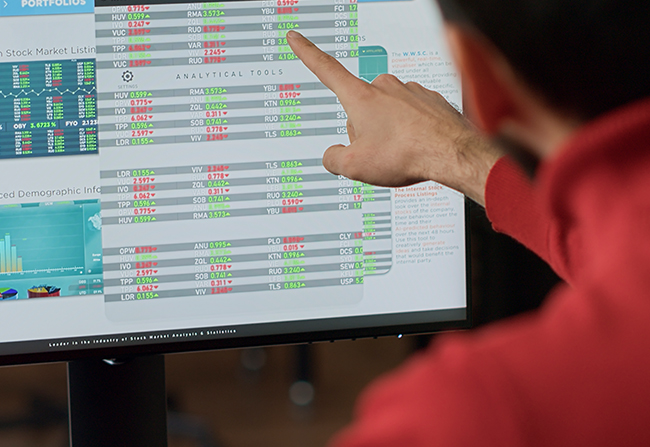
Every trader faces losses, but successful trading is about managing those losses smartly. One of the simplest yet most powerful tools for this is the stop-loss order. It acts as a safety mechanism, automatically closing a trade when the market moves against you. By using stop-loss orders effectively, you can protect your portfolio, preserve your capital, and keep emotions from influencing your decisions.
A stop-loss order is essentially a preset instruction to sell (or buy, for short trades) an asset when its price reaches a certain level. For example, if you buy a stock at $100 and set a stop-loss at $90, the stock will automatically be sold if the price falls to $90. This ensures your losses are limited and prevents you from holding on to a losing trade for too long.
How Stop-Loss Orders Work?
The main purpose of a stop-loss order is to limit losses. Without it, traders might let emotions like hope or fear dictate their actions, often holding on to losing trades longer than they should. Instead, a stop-loss order takes the decision out of your hands, ensuring that losses are contained within a predetermined level.
For instance, if you have a portfolio worth $10,000 and set a stop-loss to risk only 2% per trade, you will never lose more than $200 on any single trade. This approach helps maintain your trading capital and allows you to participate in future opportunities.
Types of Stop-Loss Orders:
There are different kinds of stop-loss orders, but two of the most common are fixed stop-losses and trailing stop-losses. A fixed stop-loss stays constant at a price you decide, such as setting a stop-loss $10 below your entry price. On the other hand, a trailing stop-loss moves along with the market when the price rises, locking in profits as the trade moves in your favor. Both types serve different purposes but share the goal of minimizing losses.
For traders who prefer flexibility, trailing stop-losses are especially useful. They let you benefit from upward price movements while ensuring that you don’t lose too much if the price suddenly drops.
Why Stop-Loss Orders Are Crucial?
Stop-loss orders are vital because they protect your portfolio from significant losses. Markets can be unpredictable, and even the most carefully planned trades can go wrong. With a stop-loss in place, you won’t need to constantly monitor the market or worry about unexpected news events that might cause prices to fall sharply.
Another key benefit is that stop-loss orders help maintain discipline. It’s easy to get caught up in emotions while trading, but a stop-loss ensures you stick to your plan. By automating your exit strategy, you can focus on finding new trading opportunities instead of second-guessing your decisions.
How to Set a Good Stop-Loss Level?
Setting a stop-loss requires some planning. A good starting point is to determine how much you’re willing to lose on a single trade. Many traders follow the 1-2% rule, which means risking no more than 1-2% of their total portfolio on any trade. This ensures that even if you face a series of losses, your portfolio won’t be heavily impacted.
To set an effective stop-loss, you also need to consider the asset’s volatility. For highly volatile stocks or markets, setting a stop-loss too close to the entry price might result in unnecessary exits during normal price fluctuations. On the other hand, setting it too far away might expose you to larger losses. Analyzing support and resistance levels, or using tools like the Average True Range (ATR), can help you place stop-loss orders at reasonable levels.
Balancing Risk and Flexibility:
While stop-loss orders are essential for managing risk, they should not be treated as rigid rules. Markets evolve, and your stop-loss strategy might need to adapt. For example, if a stock you own rises significantly, you might want to move your stop-loss higher to secure some profits. This is where trailing stop-loss orders shine, as they automatically adjust with the market’s movement.
However, avoid the temptation to constantly adjust your stop-loss based on emotions or short-term price swings. Doing so can undermine the very discipline stop-loss orders are meant to enforce.
Mistakes to Avoid
While stop-loss orders are powerful, there are common mistakes traders should avoid. One mistake is setting the stop-loss too tight, which can lead to being stopped out due to minor market fluctuations. On the flip side, setting the stop too wide can result in larger-than-intended losses. Another mistake is ignoring market conditions, such as increased volatility during earnings announcements, which might require you to adjust your stop-loss strategy temporarily.
The most damaging mistake, however, is removing a stop-loss order altogether in the hope that the market will recover. This often leads to even greater losses and can wipe out weeks or months of gains in a single trade.
Conclusion:
Stop-loss orders are a must-have tool for any trader serious about protecting their portfolio. They limit losses, help preserve capital, and ensure emotional discipline by automating your exit strategy. Whether you use fixed or trailing stop-losses, they should be a key part of your trading plan.
By learning to set effective stop-loss levels and avoiding common mistakes, you can trade more confidently and sustainably. Remember, trading isn’t about avoiding losses altogether—it’s about managing them wisely so you can continue to grow your portfolio over time.




